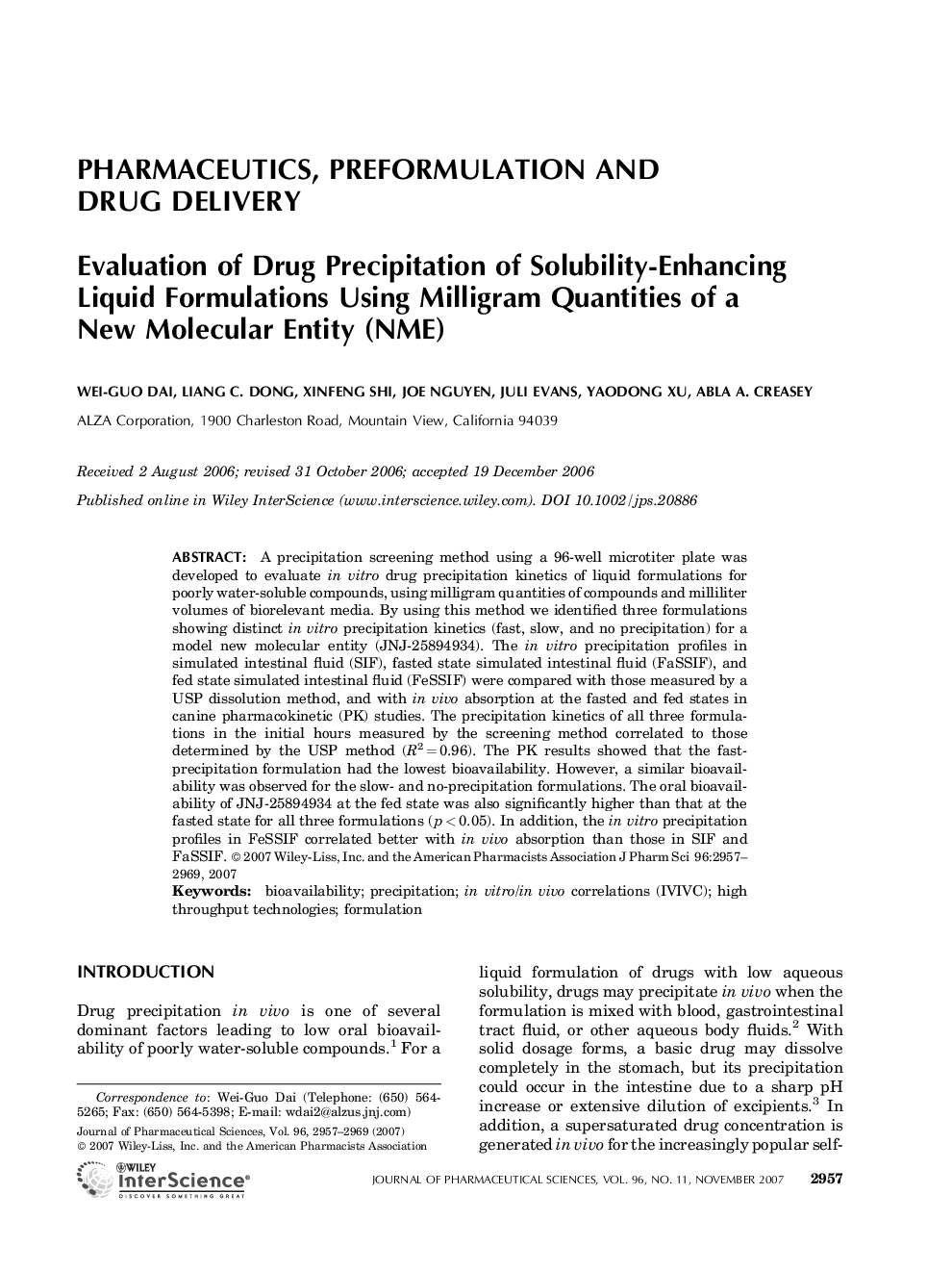| Article ID | Journal | Published Year | Pages | File Type |
|---|---|---|---|---|
| 2487725 | Journal of Pharmaceutical Sciences | 2007 | 13 Pages |
Abstract
A precipitation screening method using a 96âwell microtiter plate was developed to evaluate in vitro drug precipitation kinetics of liquid formulations for poorly waterâsoluble compounds, using milligram quantities of compounds and milliliter volumes of biorelevant media. By using this method we identified three formulations showing distinct in vitro precipitation kinetics (fast, slow, and no precipitation) for a model new molecular entity (JNJâ25894934). The in vitro precipitation profiles in simulated intestinal fluid (SIF), fasted state simulated intestinal fluid (FaSSIF), and fed state simulated intestinal fluid (FeSSIF) were compared with those measured by a USP dissolution method, and with in vivo absorption at the fasted and fed states in canine pharmacokinetic (PK) studies. The precipitation kinetics of all three formulations in the initial hours measured by the screening method correlated to those determined by the USP method (R2 = 0.96). The PK results showed that the fastâprecipitation formulation had the lowest bioavailability. However, a similar bioavailability was observed for the slowâ and noâprecipitation formulations. The oral bioavailability of JNJâ25894934 at the fed state was also significantly higher than that at the fasted state for all three formulations (p < 0.05). In addition, the in vitro precipitation profiles in FeSSIF correlated better with in vivo absorption than those in SIF and FaSSIF. © 2007 WileyâLiss, Inc. and the American Pharmacists Association J Pharm Sci 96: 2957-2969, 2007
Keywords
Related Topics
Health Sciences
Pharmacology, Toxicology and Pharmaceutical Science
Drug Discovery
Authors
WeiâGuo Dai, Liang C. Dong, Xinfeng Shi, Joe Nguyen, Juli Evans, Yaodong Xu, Abla A. Creasey,
